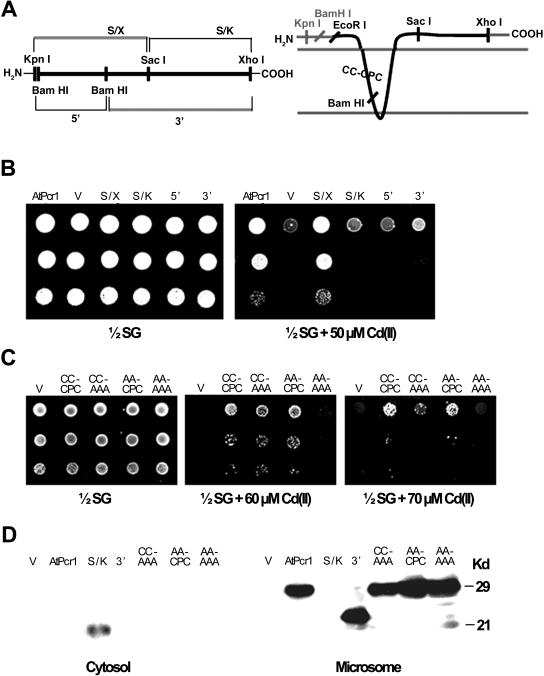Figure 3.
The transmembrane domains of AtCdr1 are important for Cd(II) resistance in yeast. A, The map of the truncated AtPcr1 constructs used (left) and the topology of AtPcr1 as predicted by the SOSUI program (right). On the left, thin lines indicate vector portions, and the thick line is the AtPcr1 gene. On the right, the epitope tag regions at both the amino and carboxy termini are shaded gray, and the AtPcr1 protein is in black. B, Growth in the presence or absence of Cd(II) of the yeast strains expressing the full-length and truncated AtPcr1 constructs. The yeast cells were grown at 30°C for 4 d on 1/2 SG plates with or without 50 μm Cd(II). C, Growth in the presence or absence of Cd(II) of the yeast strains expressing the wild-type AtPcr1 and AtPcr1 mutated at the CC-CPC sequence in the first putative transmembrane region. The yeast cells were grown at 30°C for 4 d on 1/2 SG plates with or without 60 or 70 μm Cd(II). D, Western blot of the wild-type AtPcr1 and mutated AtPcr1 proteins. The microsomal and cytosolic fractions were isolated and their proteins (50 μg each) were electrophoresed on SDS-PAGE and detected by the V5 tag antibody.

